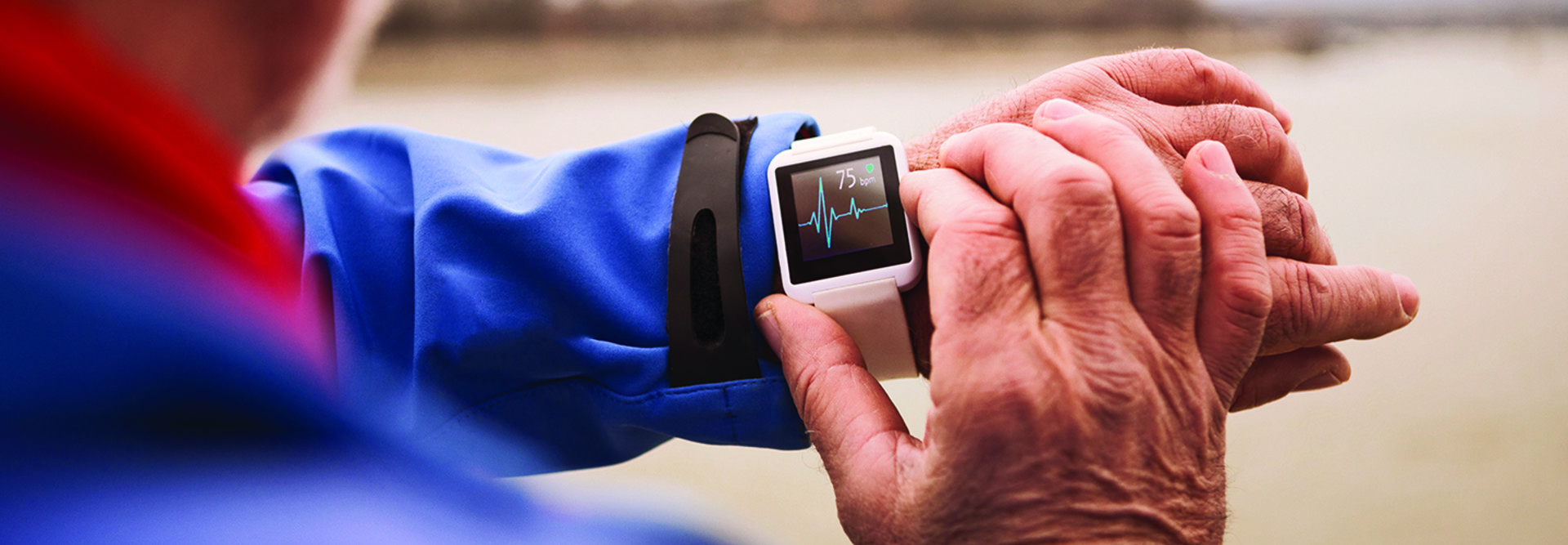1. Smart Technologies for Seniors Support Independent Living
From appliances such as induction cooktops for those with vision issues to refrigerators that let users see inside without opening the door (and set digital alerts for food expiration dates and order groceries for delivery), smart home devices offer flexibility and freedom to older adults.
“These types of technologies can help enable a person to live at home,” Rose says.
On a simpler and more cost-effective level, voice assistants can offer a helping hand for a variety of tasks. A user might ask a smart speaker — paired with other devices throughout the house — to adjust the thermostat, telephone a family member or see who’s outside via a front-door camera.
Other tools may use light detection and ranging (lidar) technology to recognize motion in the home via laser scanning if the resident doesn’t have a wearable or doesn’t want to wear one, which is common for those with dementia. Likewise, sensors that use artificial intelligence can monitor changes in a person’s gait and stride; changes detected to movement patterns can alert caregivers about the likelihood of a fall.
2. Wearables Collect Vital Health Data from Older Adults
Beyond the typical smartwatches and consumer wearables such as Apple Watch and Fitbit, among others, a growing number of personal medical devices help older adults collect vital signs, capture and transmit that data and analyze it via dashboards for clinical review.
These include Wi-Fi-enabled pulse oximeters and blood pressure monitors that provide medically accurate measurements and immediate feedback.
MORE FROM HEALTHTECH: How COVID-19 accelerated digital transformation in healthcare.
Some smart hearing aids now feature Bluetooth technology and offer remote hearing-test capabilities; complementary apps can provide sound therapy designed to maintain and strengthen a user’s hearing.
Wearables, Rose says, have gained prominence since the Centers for Medicare & Medicaid Services expanded reimbursement for remote patient monitoring in 2019.
As COVID-19 cases continue to rise, meanwhile, tools that help reduce readmissions hold even more value. “Chronic heart failure and other comorbidities can be monitored remotely and help seniors avoid exposure to the virus, keeping them safe and healthy at home,” Rose says.
Some tools can even detect if something is amiss.
“Smart tablets designed for seniors have integrated data collected from wearables. While you’re playing solitaire on your tablet, you get an alert that you need to take a walk or take your heart medication,” Rose says, also noting that certain wearables use geofencing and GPS technologies with two-way communication to alert caregivers if a person with dementia wanders away.
3. Telehealth and Seniors: A Critical Pairing for Wellness
Although telehealth is not a new technology, the pandemic has promoted rapid adoption of virtual visits and video consultations — functions that are critical to older adults with limited mobility and who are at a higher risk of contracting COVID-19 in public healthcare settings.
With so many videoconferencing options out there, each with its own user interface, clinicians and providers must consider easy-to-use platforms that allow older adults to log in securely and without complications.
Improvements in tablet and camera capabilities have made virtual visits more meaningful, Rose says, thanks to resolution levels high enough that a dermatologist could accurately assess a wound, for example.
Simplicity and visual quality also further the notion that virtual care is as effective and realistic as an in-person visit, ensuring older adults will use it when needed.













